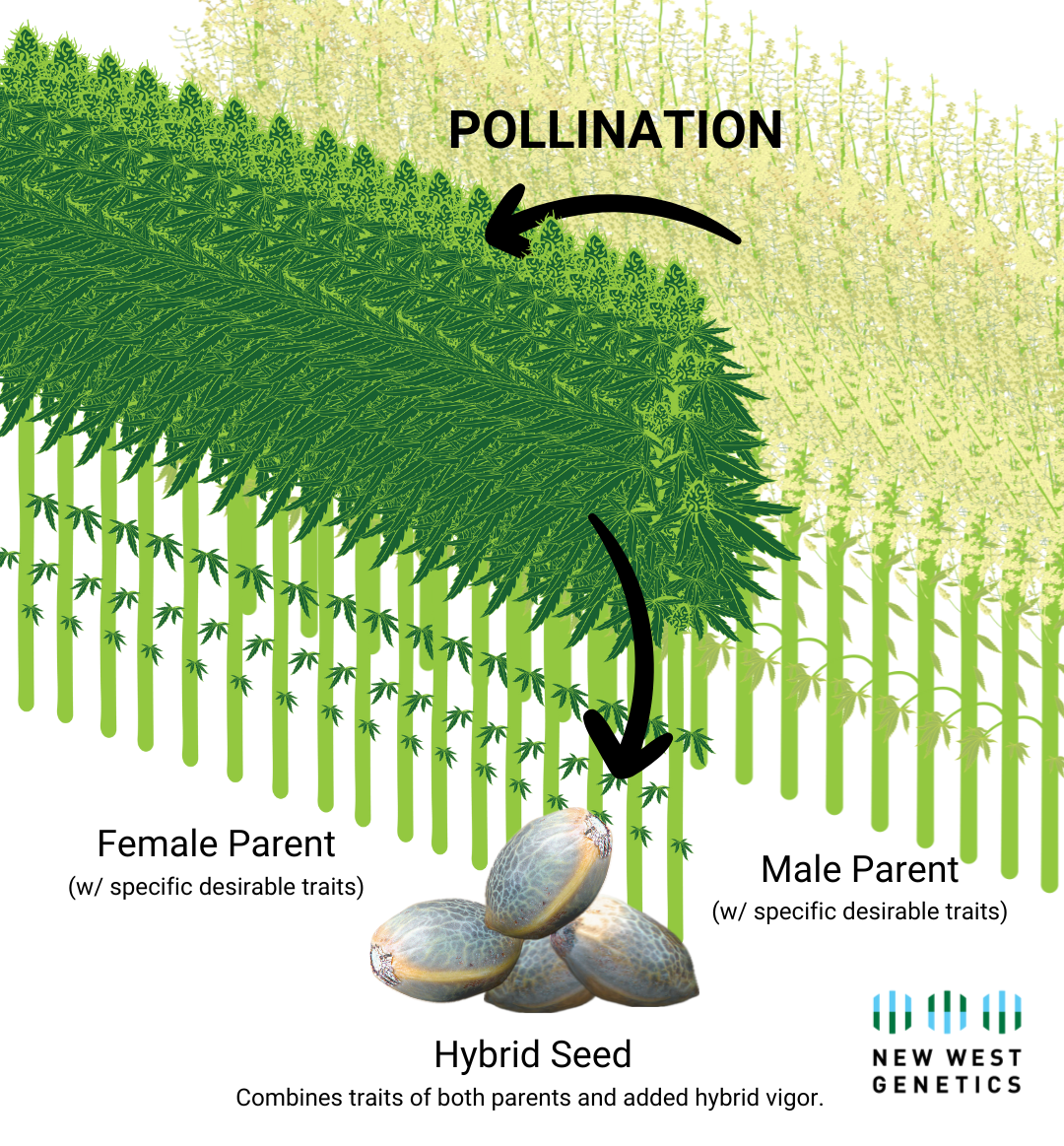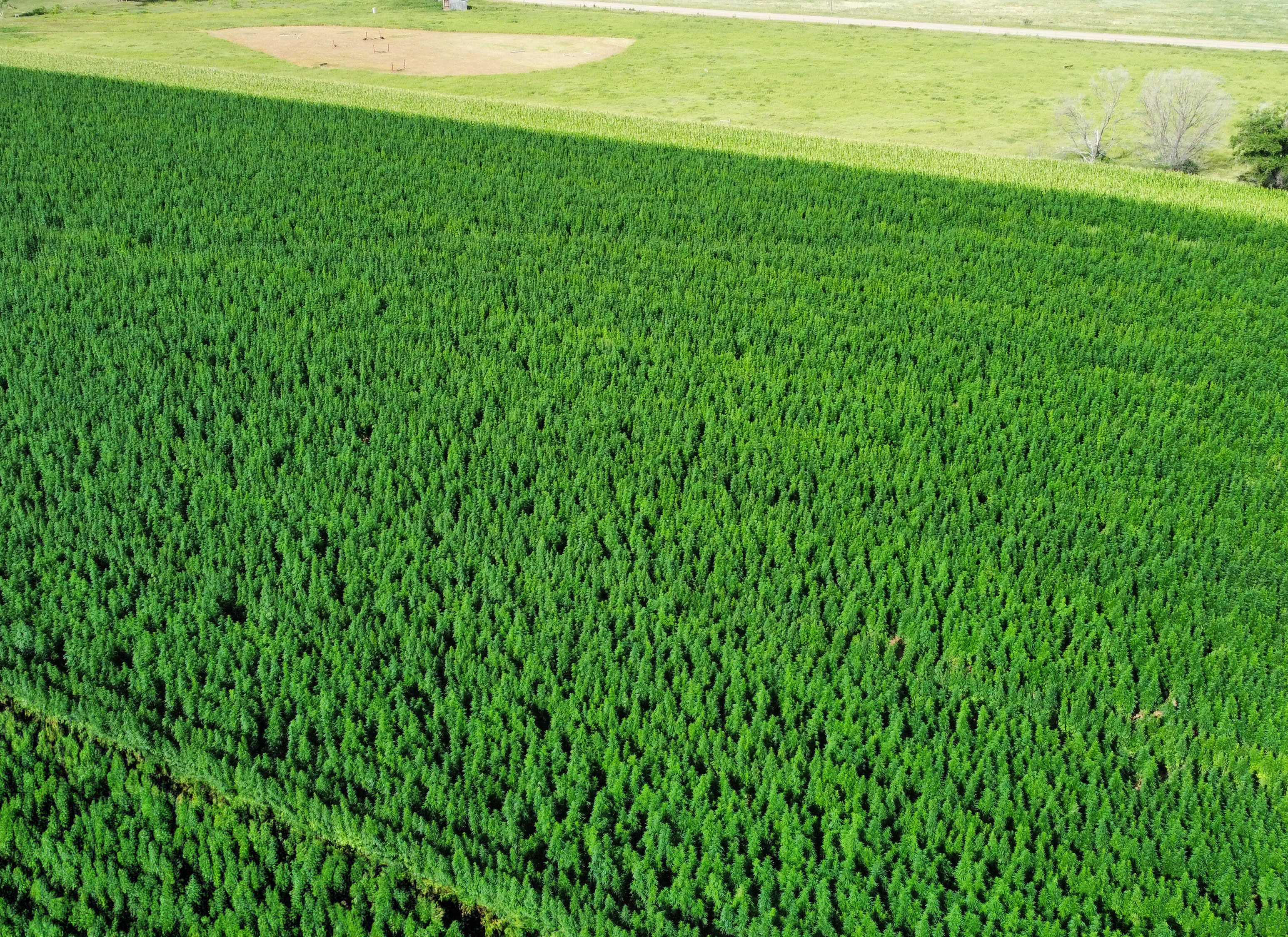How is hybrid hemp seed produced at scale?
As discussed, hybrid hemp is the F1 (first generation) seed harvested from a cross between two genetically distinct varieties. The key to successfully commercializing hybrids is to develop a method to scale seed production. A critical element of high-quality hybrid seed is using inbred parent lines in these crosses. Several different breeding approaches are used to create inbred lines and will be discussed in a future blog focused on how hemp hybrids and varieties are bred and selected. Scaled hybrid seed production has been accomplished using several approaches in other crops. Corn (maize), for instance, uses a method where tassels (the source of pollen on a corn plant) are removed from the variety being used as the female parent in the cross. This leaves only the pollen from the intended male parent available to sire seed on the female plants. In contrast to the mechanical removal of pollen anatomy used in corn, crops such as canola and sunflower have developed genetic systems to remove pollen-bearing tissues (e.g. cytoplasmic male sterility). The planting design for most hybrid crop production consists of alternating bays of male and female genotypes. Typically, the male is planted at a lower ratio than the female and at a rate that ensures adequate pollen availability while still maximizing the number of female plants. The goal is always to maximize hybrid seed yield and quality. The ratio of male: female in the field is species-dependent but is typically around 1:4. Thus far, hybrid hemp and [...]

